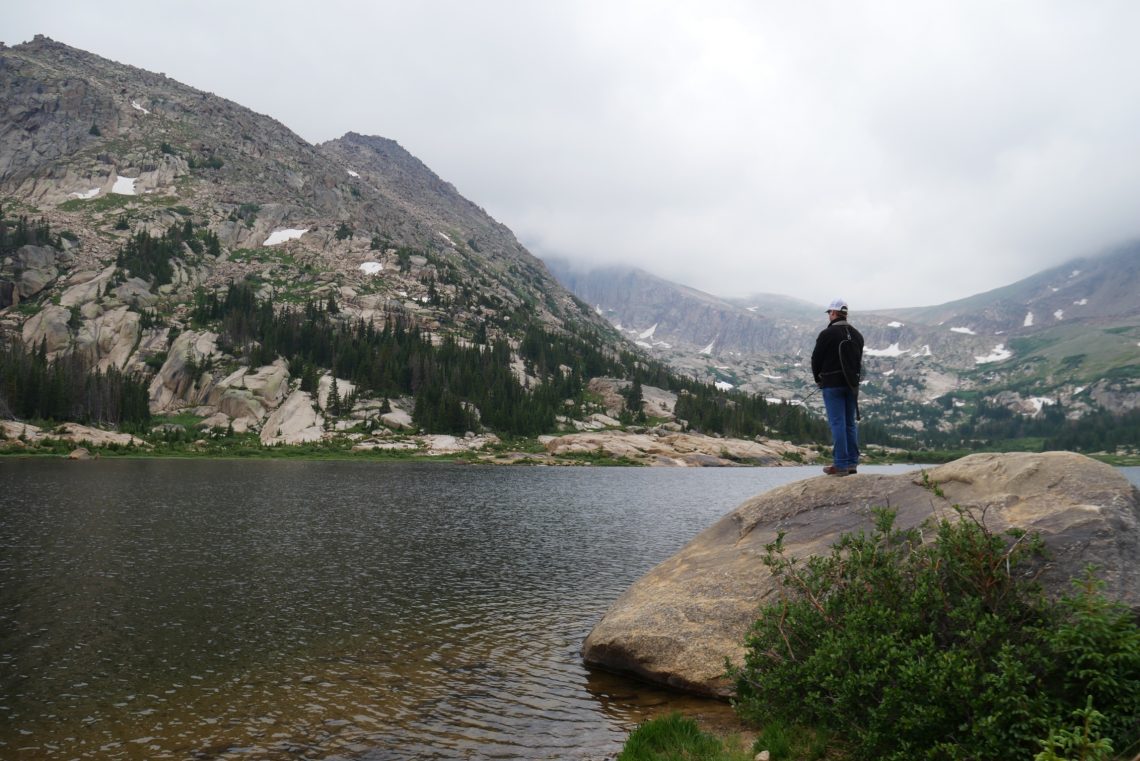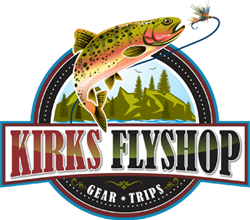Fly Fish the Best Lakes in Rocky Mountain National Park
The guides at our Colorado fly shop have been providing guided fly fishing in Rocky Mountain National Park for nearly 20 years, and while we’re not going to give away all of our hidden secrets, we can share with you some helpful tips and names of alpine lakes to fish for cutthroat that are off the beaten path in one of our nation’s most visited and heavily trafficked National Parks. You’ll just have to put in the miles to get there!
Fly Fishing in Rocky Mountain National Park: Eastern Slope
The entrance to the national park that directly borders Estes Park offers more fishing opportunities than can be explored in a single season. There are certain lakes that don’t hold fish, and there are others that you are not legally allowed to fish at, so be sure to call our Estes Park fly shop if you have questions about fly fishing in Rocky Mountain National Park. One of our shop employees would be happy to provide you with more information and fly recommendations.
Easy To Reach: Dream Lake
If you only have a few hours to fish during your trip to Estes Park and you are wanting to fish one of the park’s alpine lakes, Dream Lake is your best option. The quick hike to Dream Lake is just over a mile long and starts at the Bear Lake parking lot. During the summer, this parking lot fills up quickly, and you should arrive early if you plan on getting a spot. The cutthroat in Dream Lake can be enticed by small dry flies early in the summer before they have seen too much fishing pressure, but can be caught from the time the ice clears in early June until the beginning of October. If you are able to sight fish to cruisers but they are not rising, try dropping a small midge pattern below your dry. Because it is such a short hike, packing a pair of hip waders is a good idea so that you can wade out from the heavy tree growth that surrounds the lake and the many kids and families hiking on the path around the lake.
Harder To Reach: Lawn Lake
 Come July and August, Lawn Lake is arguably the best lake for fishing in the park. The 6.3-mile hike takes 2.5-3 hours, and the elevation gain is very gradual for
Come July and August, Lawn Lake is arguably the best lake for fishing in the park. The 6.3-mile hike takes 2.5-3 hours, and the elevation gain is very gradual for
the most part. Once you get to the lake, focus on the right shoreline, where there is a great drop off for fish to hang out around. There is a large rock to cast off that can’t be missed. The dry fly fishing is usually best after 10:00 a.m. once the water temperature has risen and the fish are actively feeding. On a calm day, dozens of rises can be seen across the lake just before dusk. If you are feeling ambitious, cross the inlet creek to reach the far side of the lake, where some of the larger cutthroat will hang out around the large rock structure.
Hardest to Reach: Lost Lake
The hike to Lost Lake is not for everybody, but the rewards upon arrival are unmatched. Because the trail to Lost Lake is ten miles one way, we recommend that it be done as a guided overnight backpacking trip in Rocky Mountain National Park. There are several overnight sites that you can reserve through the national park’s backcountry reservation website or if you book early enough, one of our Colorado fly fishing guides will lead you there and provide all of the necessary backpacking gear. The dry fly fishing at Lost is nearly non-stop, with the east end of the lake typically holding the highest quantity of fish. The western inlet side is very shallow and does not provide as much cover for cruising trout. Lost holds both brook and cutthroat trout, with the brook trout known to grow up to 16 inches in some cases. Camping at Lost Lake also provides one with easy access to Lake Husted and Lake Louise, the lakes that sit in the bowl directly above Lost Lake. Although the fish are more selective, these lakes offer opportunities for larger cutthroat trout.
Fly Fishing in Rocky Mountain National Park: Western Slope
While the west side of the park doesn’t have nearly the number of fishable lakes that the eastern side does, fewer people make the trip over to the west slope, and therefore the alpine lakes sprinkled across this side of the park see less fishing pressure than those on the east.
Easy To Reach: Timber Lake
In general, the lakes on the western side of the park are not as easily accessible as those on the east. At 4.5 miles one way, Timber Lake is one of the shortest day trips that offers stillwater fly fishing in Rocky Mountain National Park. While it can easily be done in a day, the landslide that has created a vast pile of trees over the trail in one section can add a bit of time to the hike. That being said, the native cutthroat that inhabit Timber Lake rarely see artificial flies. As always, terrestrial patterns such as ants and beetles are good dry fly patterns to start with, but Timber Lake is also a fun place to fish streamers if the fish are not readily rising to the surface.
Harder To Reach: Lake Verna
Lake Verna is one of the largest fishable lakes for fly fishing in Rocky Mountain National Park, and after hiking just over 6.5 miles to reach the lake, it can be overwhelming to know where to start. Along the way, you will pass Lone Pine Lake, but we recommend not wasting too much time here. The extra effort needed to reach Lake Verna and nearby Spirit Lake is well worth it. Both of these lakes hold a plentiful population of brook trout, and hiking around to the inlet side of the lake can leave you bored with the sheer number of fish that you will catch. If you are looking for a longer day trip to teach someone how to fly fish a lake, check out Verna and Spirit for fly fishing in Rocky Mountain National Park.
Hardest to Reach: Haynach Lakes
The hike to this group of lakes is roughly 7.5 miles and is typically done as an overnight trip for fishing purposes. The only downside to camping at Haynach Lakes is that the actual backcountry site is about 30 minutes away from the lakes. Besides that, the fishing is phenomenal. The average size of fish in the main lake is 13-14 inches, and they are some of the most beautiful cutthroat in the entire park. One of the best areas of the lake to fish is the bay that you see when you first arrive at the lake. When the trail ends, following the boulder field around to the right is where we have caught some of our best fish at Haynach. If the fishing in the upper lake turns off and you are in need of a confidence boost, you can make the short walk down to the lower lake to catch a great number of smaller cutthroat.
Fly Fishing in Rocky Mountain National Park With A Guide
While some anglers prefer to fish without a guide, we highly recommend booking one of our Rocky Mountain National Park fly fishing trips. For day trips, book a Estes Park fly fishing trip but for overnight trips, try a guided backpacking trip in Rocky Mountain National Park or a Colorado llama trek where a friendly pack llama will carry your camping gear on its back. Each of the trips mentioned comes with a professional guide who can provide the proper gear, expertise, and knowledge of the area to help your day be more successful.
There are few more experienced in fly fishing in Rocky Mountain National Park than the staff here at our Estes Park fly shop. If you have further, more detailed questions about fishing the alpine lakes right here in our backyard, swing by the shop and we can provide you with specific details to help you be successful on your Colorado fly fishing trip. If you are looking for a great overall experience, consider booking an Estes Park fly fishing trip with one of our Colorado fly fishing guides, who can take you on either a single-day or overnight trip to some of the best fly-fishing locations!

